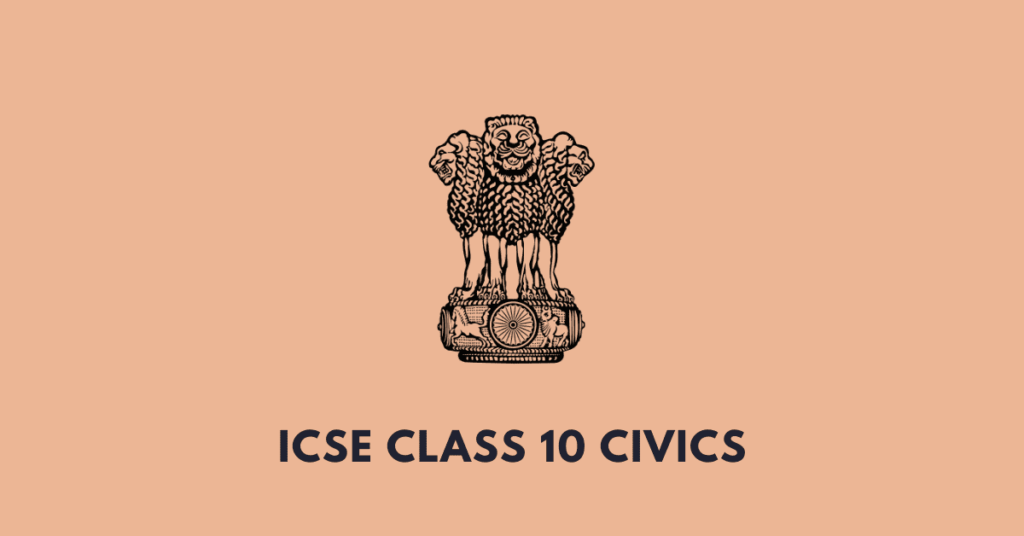Get notes, summaries, questions and answers, MCQs, extras, and PDF chapters that are part of ICSE Class 10 Civics (Morning Star). However, the notes should only be treated as references and changes should be made according to the needs of the students.
Select Chapter
| Chapter 1: The Union Parliament |
| Chapter 2: The President and The Vice-President |
| Chapter 3: Prime Minister and Council of Ministers |
| Chapter 4: The Supreme Court |
| Chapter 5: The High Courts and Subordinate Courts |
About ICSE Class 10 Civics textbook (Morning Star)
The ICSE Class 10 Civics textbook covers essential aspects of India’s political structure, helping students understand how the country is governed. Chapter 1, “The Union Parliament,” introduces the two houses of Parliament—Lok Sabha and Rajya Sabha. It explains their roles, powers, and how they work together to make laws. The chapter also describes the process of passing bills and the responsibilities of members of Parliament.
Chapter 2, “The President and The Vice-President,” discusses the roles of these key figures in the Indian government. The President is the head of state, and the Vice-President supports this role. The chapter explains their election processes, duties, and how they represent the nation on both domestic and international levels.
In Chapter 3, “Prime Minister and Council of Ministers,” students learn about the executive branch of government. The Prime Minister leads this branch, with the support of the Council of Ministers. The chapter outlines how they are chosen, their functions, and how they implement government policies. This chapter also covers the balance of power between the Prime Minister, the President, and Parliament.
Chapter 4, “The Supreme Court,” focuses on the highest court in India. The Supreme Court is the guardian of the Constitution and has the power to interpret laws. This chapter explains the court’s role in protecting citizens’ rights, resolving disputes, and ensuring that the law is followed throughout the country.
Finally, Chapter 5, “The High Courts and Subordinate Courts,” describes the judicial system at the state level. High Courts handle important cases within each state, while Subordinate Courts deal with local matters. This chapter highlights how these courts work together to maintain justice and law across India.
These chapters provide a clear overview of India’s political and judicial systems, helping students grasp the fundamental aspects of governance and law.

Ron’e Dutta is a journalist, teacher, aspiring novelist, and blogger. He manages Online Free Notes and reads Victorian literature. His favourite book is Wuthering Heights by Emily Bronte and he hopes to travel the world. Get in touch with him by sending him a friend request.
Get notes of other boards, classes, and subjects
